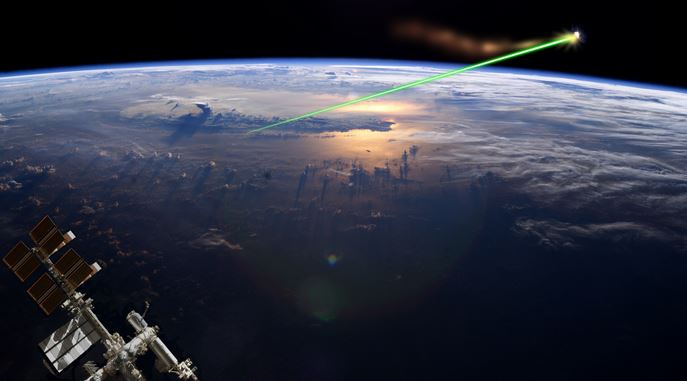
As data volumes grow, the pressure on network infrastructure increases to develop ways of coping with demands.
IDC predicts that data will grow to 44 zettabytes by 2020, increasing from 4.4 zettabytes in 2014. Consider that one zettabyte is equivalent to a billion terabytes, which is equal to a trillion gigabytes, phew, now if your head doesn’t hurt too much we shall carry on.
The point of highlighting this is that it’s a lot of data and it is rapidly increasing which means that the infrastructure has a lot of work to do in order to keep up with it.
So what are the options available for moving all this data and are there better options out there for businesses to use that mean they won’t throttle their internet connection?
CBR identifies what the best options might be for the future and what are the best options available now.
1. Space Lasers
It sounds futuristic but Europe is beginning to roll out a data superhighway that will use a laser to gather pictures of the planet taken by spacecraft and relay them to the ground.
The European Data Relay System terminal was launched on Friday from Kazakhstan, and then released from its host satellite on Saturday morning. The stationary hub, which has been created in partnership between EDRS and Airbus Defence and Space will be capable of transmitting data at 1.8Gbps.
This means that it will be 90 times faster than a typical connection you have at home, removing significant time delays that can hinder time-critical data transfers.
A second will be launched next year over Europe and a third is planned to go up in 2020 over the Asia-Pacific region.
2. Linux Light Bulb
Transferring data via visible light is the idea from Disney researchers, essentially Li-Fi (Light Fidelity), which is a bidirectional high speed and fully networked wireless communication technology that is similar to Wi-Fi. The idea is that this technology can replace or complement Wi-Fi hotspots.
LED in a room can be programmed to communicate with each other and other compatible devices through Visible Light Communications, this means that they can control smart devices to be able to do carry out functions.
The downside is that light waves cannot penetrate walls so you need a direct line of sight and they cover a much smaller range than Wi-Fi, however, this means that they are more secure.
3. AWS Snowball
This is basically a piece of hardware that can be used to transport data from a customer’s data centre to AWS.
Offering up to 50TB per box, it aims to tackle the time that it takes to upload data, which over an Internet connection can be extremely time consuming when you are talking about petabytes of data.
The box is designed to be tamper-resistant, encrypted with end-to-end 256 bit encryption and Trusted Platform Module.
It uses E Ink shipping labels which are automatically updated with the shipping address and would cost around $200 per job.
So if you really have a lot of data and don’t have the time to send it through traditional means then the Snowball could be the solution for you.
4. Optical RAM
Fibre optics aren’t anything particularly new, most towns and cities already have access to fibre optic Internet, if not then they will do soon.
But fibre optic isn’t a cure all, it has its problems. One particular problem occurs when that light signal reaches a machine, once it does that it must then be converted into an electrical signal which copper-veined devices can handle.
This results in speed bottlenecks.
However, engineers at NTT think that optical RAM may be the answer to this by using optical RAM cells which have memory gates that take 1s and 0s of binary code and creates pulses of light by blocking or allowing light to pass.
The end result is that the bottlenecks no-longer exist, making fibre optic much more effective and also more power efficient.
The optical RAM consumes 30 nanowatts, which makes it five times less power hungry than a flash drive.
5. LCRD integrated photonics
NASA has created a laser-powered modem that uses integrated-photonics to transfer data up to 100 times faster than radio.
The reason why NASA is behind this is because it is seeking a way for it to be able to more effectively communicate with the International Space Station and potentially communicate on an interplanetary level.
The 1Gbps Laser Communications Relay Demonstration is a device that will be the size of a mobile phone that incorporates optics-based functions such as lasers, switches and wires onto a microchip.
While it has scientific benefits for the community as a whole, it could be put to good use for distributing data from data centre to data centre or to businesses.






